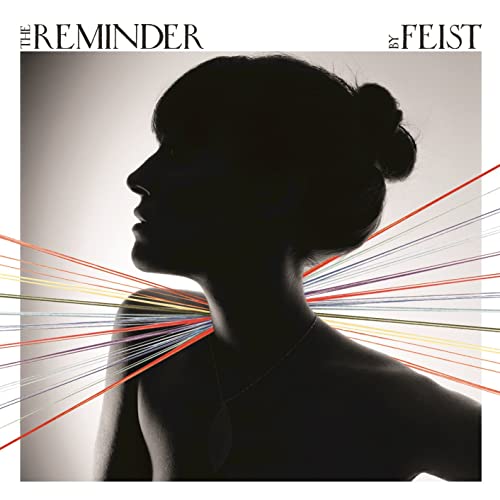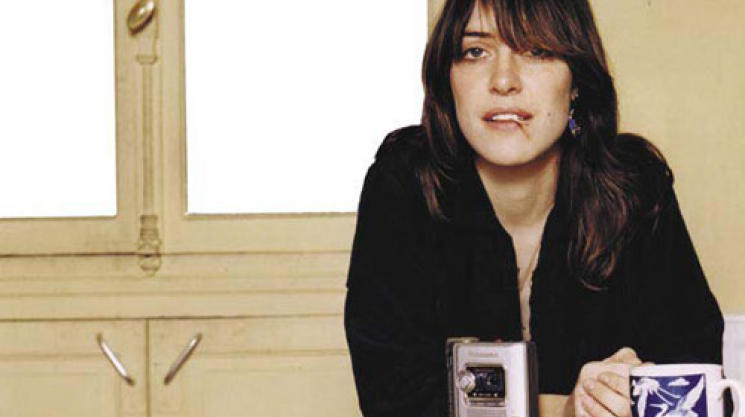Music journalism, books and more
Feist - Fantastic Feist
Toronto’s Music Gallery is housed in St. George the Martyr Church, on the edge of a park and a stone’s throw from Queen Street West. The tiny building, with its stained-glass windows and excellent acoustics, served as a fitting launch pad last March for Feist’s latest album, The Reminder. There, on an unseasonably mild evening, 200 invited guests sat on pews and waited for the Canadian artist’s arrival. As the lights dimmed, the anticipation was palpable. “Thanks for helping us kick off the training wheels,” said Feist, before she and her band performed 11 compositions from the album. The hour-long set served immediate notice that an important new songwriter had arrived.
Of course, Feist was already well established as an indie phenomenon at home and abroad. Her 2004 release, Let It Die, won two Juno Awards, sold 500,000 copies worldwide and was almost universally hailed by critics on both sides of the Atlantic. Recorded in Paris, the album featured six original numbers, including the hit “Mushaboom.” But many of the reviews cited Feist’s covers of songs by Ron Sexsmith and the Bee Gees. And effusive praise from publications like Rolling Stone and The Guardian focused more on Feist’s whispery vocals and the album’s romantic French café vibe than on the songs themselves.
 That is not likely to be the case with The Reminder. The album, produced by Feist along with collaborators Jason “Gonzales” Beck, Renaud Letang and Dominic “Mocky” Salole, is brimming with original songs that are superior in every way to anything that appeared on Let It Die. There are quiet confessionals like “Intuition,” “The Park” and “How My Heart Behaves” and upbeat numbers such as “I Feel It All,” “Past in Present” and “My Moon My Man.” Never has she sounded so assured in her writing, singing and guitar playing. “I know more than I knew before,” Feist sings on “I Feel It All,” I didn’t rest, I didn’t stop.” “It’s a confidence thing,” she confirmed, when asked recently about the abundance of new original material. “At this point, I think I have enough strong material on my own that I don’t need to do covers any more.”
That is not likely to be the case with The Reminder. The album, produced by Feist along with collaborators Jason “Gonzales” Beck, Renaud Letang and Dominic “Mocky” Salole, is brimming with original songs that are superior in every way to anything that appeared on Let It Die. There are quiet confessionals like “Intuition,” “The Park” and “How My Heart Behaves” and upbeat numbers such as “I Feel It All,” “Past in Present” and “My Moon My Man.” Never has she sounded so assured in her writing, singing and guitar playing. “I know more than I knew before,” Feist sings on “I Feel It All,” I didn’t rest, I didn’t stop.” “It’s a confidence thing,” she confirmed, when asked recently about the abundance of new original material. “At this point, I think I have enough strong material on my own that I don’t need to do covers any more.”
Sitting in a Latin American café in Toronto’s west end, Feist spoke at length about composing, guitar playing and her love of recording sounds on a Dictaphone. Sipping a cup of mint tea, the 31-year-old singer-songwriter admits that she’s been wielding a miniature recording device since she was a teenager. “Probably for 15 years now I’ve been keeping this collection of Dictaphone tapes,” says Feist. “It’s not like personal diaries, because it’s not me talking. I’d just turn it on and catch the sound of the subway pulling up, or I’d record those ridiculous 4 a.m. conversations in a van when you’re on tour and people are jackassing around.”
On The Reminder, Feist uses her own field recordings of footsteps, doors closing and birds singing as the connective thread between “My Moon My Man” and “The Park.” “It’s really chapter one and chapter two of the same story in a way,” she explains. “It has me ditching my man and running outside and being alone. If you were writing a writing, that’s what the girl would do.” The sounds of waves help to illustrate “The Water,” a shimmering track on which Feist sings and plays piano. Asked about the story behind the song, she replies: “I could never literally translate what it means, but I’m sure it will mean something else in two years.” She adds: “It’s like when you read something like Catcher in the Rye in high school and then re-read it as an adult. It’s a different book because you’ve changed. That’s the fun part of leaving riddles unanswered. The clues provide little scavenger hunts for you that become different as time passes.”
Talking about the inspiration behind her new album, Feist admits that the stories are autobiographical but she’s loathe to elaborate. The Reminder, she adds, wasn’t exactly a concrete concept. “There’s a sort of connect the dots thing where you don’t see the overall shape but you see the dots,” says Feist, in her delightfully abstract way. “Then eventually they’re connected and you’re on this labyrinth path of not knowing really where you’re going, but you just go where it seems to make sense. Then, if you squint a bit, you can see it. But it’s never clear. I don’t like being spoon fed anything. I like the shadows being left in there so you fill in the blanks yourself. It’s like holding a lantern up to the possibilities, squinting. You know, it’s like when you look in the back of a cave and there’s a glint of something and you’re like ‘is it a kitten, or a saber-tooth tiger?’ It’s whatever draws you in there.”
The songs on Let It Die are essentially sad, perhaps because, as one magazine has since revealed, many of them were written in the aftermath of Feist’s romantic breakup with Chris Murphy, of Canadian power-pop veterans Sloan. But Feist attributes this more to how she approaches her craft. “My own songwriting has always tended to be on the more melancholic side,” she says, “not that the songs were melancholic, but because of the way I knew how to record, which was four track and by myself. I’ve always had to force myself to write in 4/4 or in a major key, because my ears just loved the sound of the waltz or the ¾, that see-saw movement, rather than the marching, you know? The minor key is just more evocative. It’s a little less color-by-numbers and more water color.”
Born in Amherst, Nova Scotia, Leslie Feist grew up in Calgary where she wrecked her vocal chords singing with Placebo, a local punk band that got to open for the Ramones after winning a Battle of the Bands contest. After moving to Toronto in 1998, she joined indie rockers By Divine Right. “I began playing with Jose Contreras and he entrusted me with the role of rhythm guitarist,” Feist recalls. At one point, the band toured Canadian stadiums with the Tragically Hip, playing in front of crowds of 40,000. “It was such a boot camp. My learning curve was completely vertical in those two years.”
 Soon, Feist was recording songs that would appear on her debut solo album, Monarch (Lay Your Jewelled Head Down). She also began collaborating with Merrill Nisker, the performance artist known as Peaches, and performed with her in Berlin using the comical stage name Bitch Lap Lap. Back in Toronto, Feist joined her friends in the art-rock collective Broken Social Scene and sang on the band’s acclaimed You Forgot It In People album. Her appearances with the band made her a fantasy figure for indie fan boys. But Europe kept calling and Feist eventually moved to Paris, where she and Gonzales went into a studio and laid down the Euro-lounge and folk-tinged café songs that would appear on Let It Die. Says Feist: “That air-tight world really served those songs and those arrangements in that way.”
Soon, Feist was recording songs that would appear on her debut solo album, Monarch (Lay Your Jewelled Head Down). She also began collaborating with Merrill Nisker, the performance artist known as Peaches, and performed with her in Berlin using the comical stage name Bitch Lap Lap. Back in Toronto, Feist joined her friends in the art-rock collective Broken Social Scene and sang on the band’s acclaimed You Forgot It In People album. Her appearances with the band made her a fantasy figure for indie fan boys. But Europe kept calling and Feist eventually moved to Paris, where she and Gonzales went into a studio and laid down the Euro-lounge and folk-tinged café songs that would appear on Let It Die. Says Feist: “That air-tight world really served those songs and those arrangements in that way.”
By contrast, The Reminder was recorded in a rambling, 200-year-old manor in the French countryside. “We weren’t in this hermetically sealed environment where you can’t tell if it’s day or night,” says Feist. “It was this big old house with windows everywhere and spring blooming outside. There were dogs living there that would push the doors open and come in and sniff around and bark at us while we were playing. You don’t necessarily hear all of that stuff, but for me it’s there in the recordings.” Feist collaborated on several numbers with other songwriters, including Gonzales on “The Limit to Your Love,” Mocky on “So Sorry,” New Buffalo’s Sally Seltmann on “1234” and Sexsmith on “Brandy Alexander.” Feist, who had previously recorded Sexsmith’s “Secret Heart, said they co-wrote the new song after corresponding “in this weird pen pal kind of way.” She adds: “Ron’s recording his own version of it, but his is more of a rollicking Irish drinking ballad.”
Does writing run in her family? “My dad’s a painter and it skipped a generation,” she says, laughing. “Writing is just what makes the most sense to me.” She lists her favorite authors as Zadie Smith, Mikhail Bulgakov, Jonathan Franzen, Toni Morrison and Anne-Marie McDonald. “Those people are geniuses,” she gushes. “They do something I want so badly to do but don’t know how to even begin. Songs, in a way, satisfy that need to tell a story. But it’s more of a snapshot, because a song can be about a moment in time or 10 years or an eternity. It can be anything—it’s up to you how you use those three minutes.” Are her songs, then, like short stories? “In a different way,” says Feist. “If I’ve done what I intend to do, they tell stories that don’t necessarily explain everything. They just paint images and let you decide for yourself what they’re about.”
Originally published in Words & Music Summer 2007


